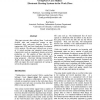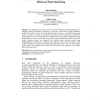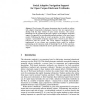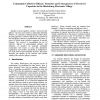4126 search results - page 22 / 826 » Modelling Electronic Organizations |
HICSS
2002
IEEE
14 years 15 days ago
2002
IEEE
This paper presents data collected from 5 real-world (federal, state and commercial) groups as they undertook their real-world (Business Process Reengineering (BPR) and Joint Appl...
JUCS
2006
13 years 7 months ago
2006
: This paper presents three variants of Genetic Programming (GP) approaches for intelligent online performance monitoring of electronic circuits and systems. Reliability modeling o...
CMOT
2007
13 years 7 months ago
2007
Organizations change with the dynamics of the world. To enable organizations to change, certain structures and capabilities are needed. As all processes, a change process has an or...
AH
2004
Springer
14 years 29 days ago
2004
Springer
Closed corpus AH systems demonstrate what is possible to achieve with adaptive hypermedia technologies; however they are impractical for dealing with the large volume of open corpu...
HICSS
2003
IEEE
14 years 25 days ago
2003
IEEE
Bandura’s social cognitive construct “perceived selfefficacy” has been used widely to understand individual behavior as a function of domain-specific beliefs about personal ...




